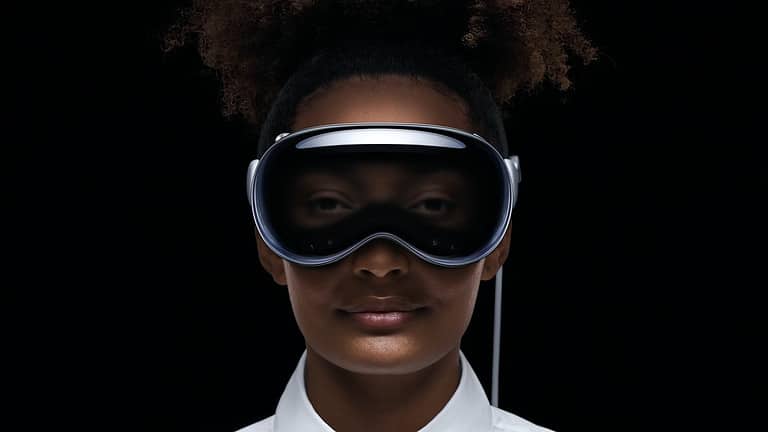It’s been confirmed: Apple will be releasing a headset that it has called Apple Vision Pro. For the first time since the Apple Watch in 2015, the Cupertino-based tech giant is coming out with an entirely new product line. The $3499 price is a steep one, but the kicker is that the new piece of kit is filled to the brim with hugely advanced technology, all in a compact size. What can you do with it? Will it shake up the way we work?
Tim Cook unveiled the Vision Pro at WWDC 2023, making its appearance as the famous “One More Thing…” at the end of the big annual presentation. In doing so, it follows the same trend that the vaunted FaceTime app, MacBook Air and Apple Watch have all adhered to. A gigantic amount of speculation preceded the announcement: from doubts within Apple itself about the susceptibility of a VR headset to begin with, to alleged leaks of its design. All that can be put in the rear view mirror as the tech giant is ready to commit to nurturing its latest addition to the Apple family of products.
The end result: a striking appearance that in many ways follows the design choices of previous VR/AR sets. The shape of the HMD (head-mounted display) is reminiscent of the Meta Quest Pro, which also comes closest to Apple’s headset in other areas. The Vision Pro contains the powerful Apple M2 combined with a brand new R1 chip, which is said to be able to process all the sensors on board the headset within 12 milliseconds. That’s a little more than 83 Hz, although we haven’t yet been told by Apple how fast the internal display itself switches. The combination of those two will determine the apparent fluidity on offer here. What we do know is that the display on the inside is a micro-OLED display that runs at around 4K per eye. In terms of battery life, we should expect 2 hours. The battery is connected to the Vision Pro via a cable and can be carried in a pocket. It is an interesting choice since the Meta Quest Pro, for example, is completely wireless.
There are no external controllers or sensors: your hands and eyes provide the control. According to tech-youTuber Marques Brownlee, who got to try out the Vision Pro for half an hour, eye and hand tracking is by far the most impressive feature of the headset. However, he also states that it is quite a heavy device. Not too surprising since it uses high-end materials and contains quite a few cameras, sensors, screens and chips. The Vision Pro’s most exceptional visual feature is undeniably the passthrough of the user’s eyes. Indeed, as a Vision Pro wearer, you are not completely excluded from the outside world. In fact, when you look at someone through the passthrough cameras, your eyes can also be seen by the other person.
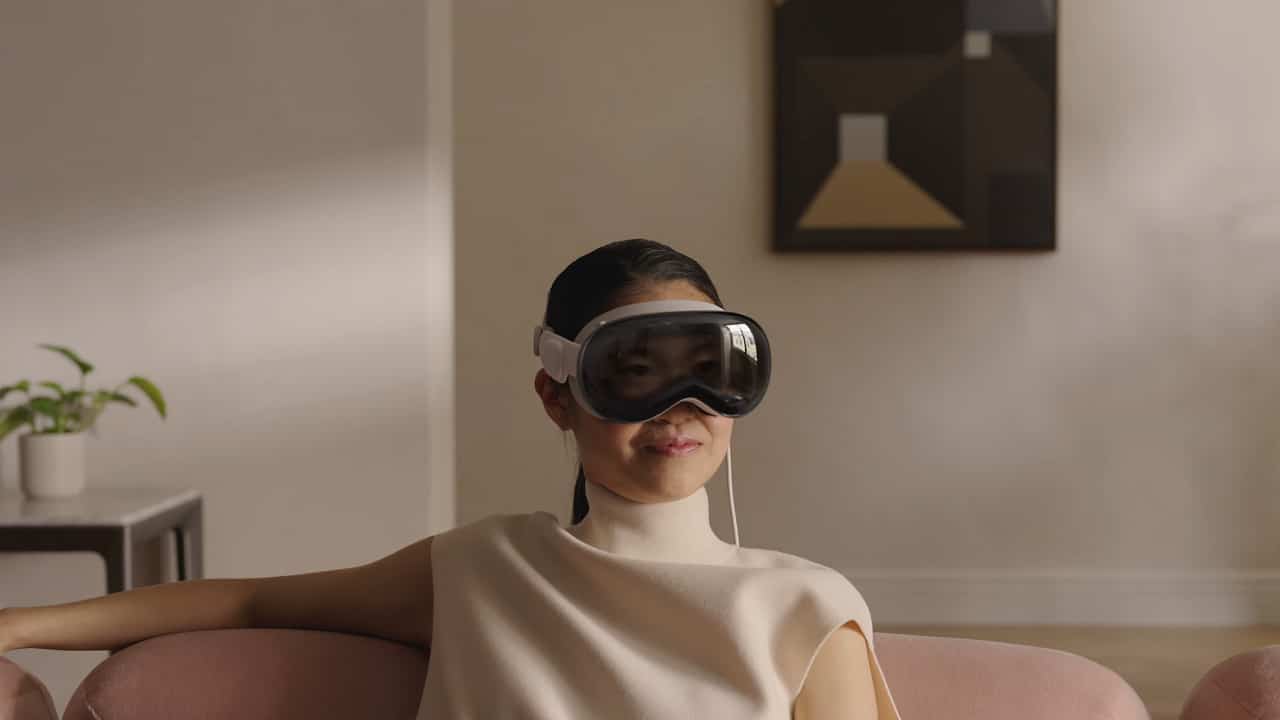
Before we dive into actual use, we should also take a moment to consider the modularity of the Vision Pro. Because every head is different and spme us wear glasses, there is a wide range of unique face masks, head straps and prescription lenses available. Thus, every individual should have the opportunity to work comfortably with an Apple headset.
Spatial computing
The VR industry has been continuously moving toward increased comfort, higher resolutions and better tracking since the launch of the Oculus Rift in March 2016. External sensors are mostly a thing of the past, and headsets like the Meta Quest 2 and Quest Pro can function without a cable. Where Apple places the Vision Pro on the market, however, is as an entirely new kind of computer rather than merely a headset. Speculative pieces have been using different terms again and again to refer to Apple’s new offering: virtual reality, augmented reality, mixed reality. Apple itself opts for “spatial computing”. This refers to the fact that for the first time, this product aims to put computing in 3D. We can already hear Mark Zuckerberg shouting that this is, in fact, the Metaverse. Apple’s vision seems somewhat different from this, about which more later.
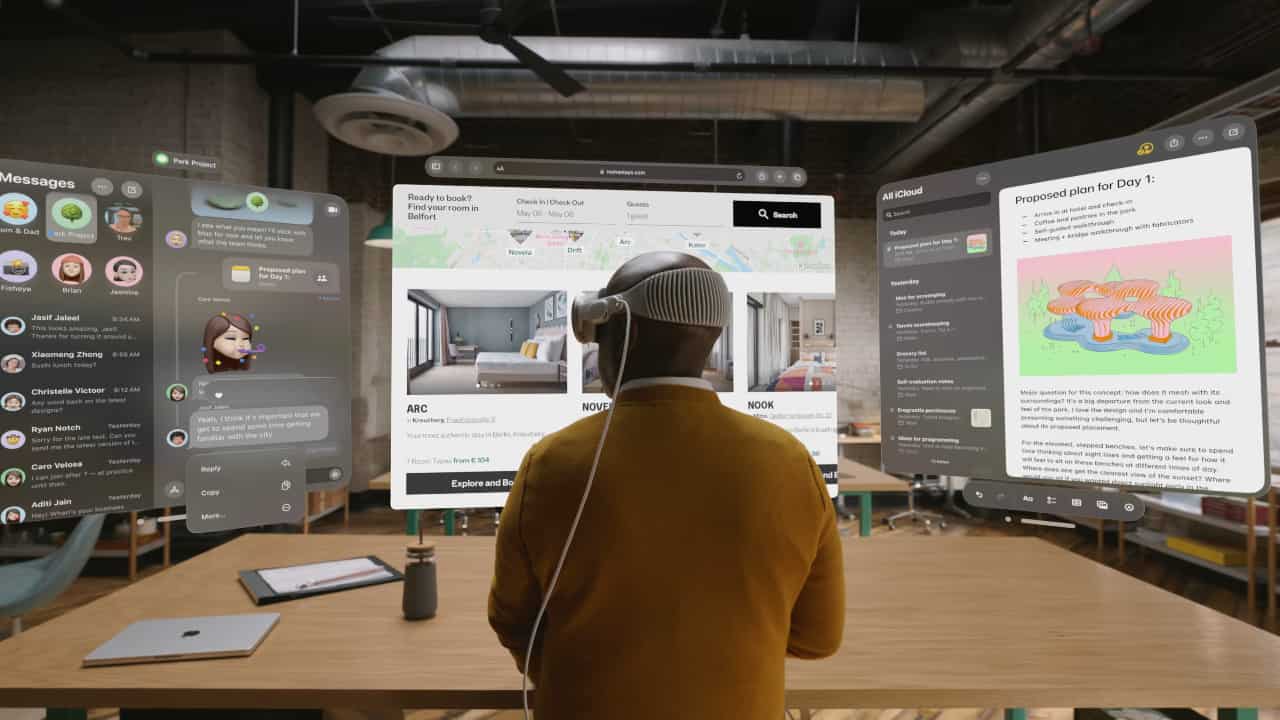
Specifically, spatial computing means that all applications are in the user’s world. With a dial you can choose how “complete” the escapism within the glasses is. Apps can be located within your own workspace or living room, casting shadows as if they were physically present. Alternatively, you can completely cut yourself off from the outside world. This is something altogether different to the confined VR experiences at Meta, on the PC and on the PlayStation.
The effect is that applications will have to adapt differently to take full advantage of 3D. Apple itself has numerous examples. For example, it showed the ability to send objects from one Vision Pro user to another, such as models of proposed factories, cars, et cetera. In addition, it has support for FaceTime, Teams and other meeting platforms. Unlike the alienating avatars within the Metaverse, Apple is opting for a 3D scan of the user’s face, so non-Vision Pro users will see a realistic representation of your face where there would otherwise be a webcam display. Everything will depend on the execution of this idea, so we are very curious to see what the final product can do in this.
visionOS: a new paradigm
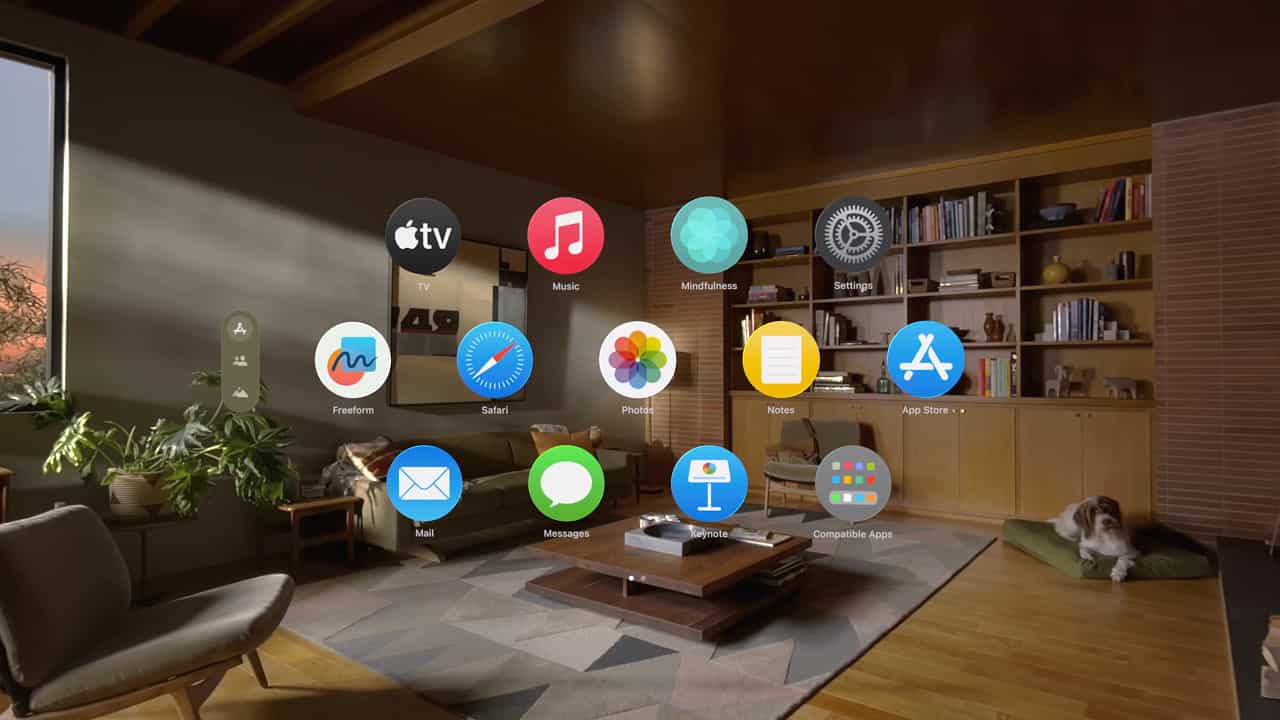
To enable these new ways of working, Apple has designed an entirely new operating system: visionOS. We see this OS appear in various forms during the presentation, with Apple emphasizing its own applications. It should surprise no one that much of this is primarily for consumer usage and entertainment. Still, it is interesting to once again see Apple taking the same approach as it did during the introduction of the Apple Watch and iPhone. It focuses on unique and sophisticated controls along with an ecosystem of proprietary apps. This while leaving plenty of room for developers to put their own spin on the new features. It’s all in the iPhone playblook in particular, although that device even launched without an App Store at all.
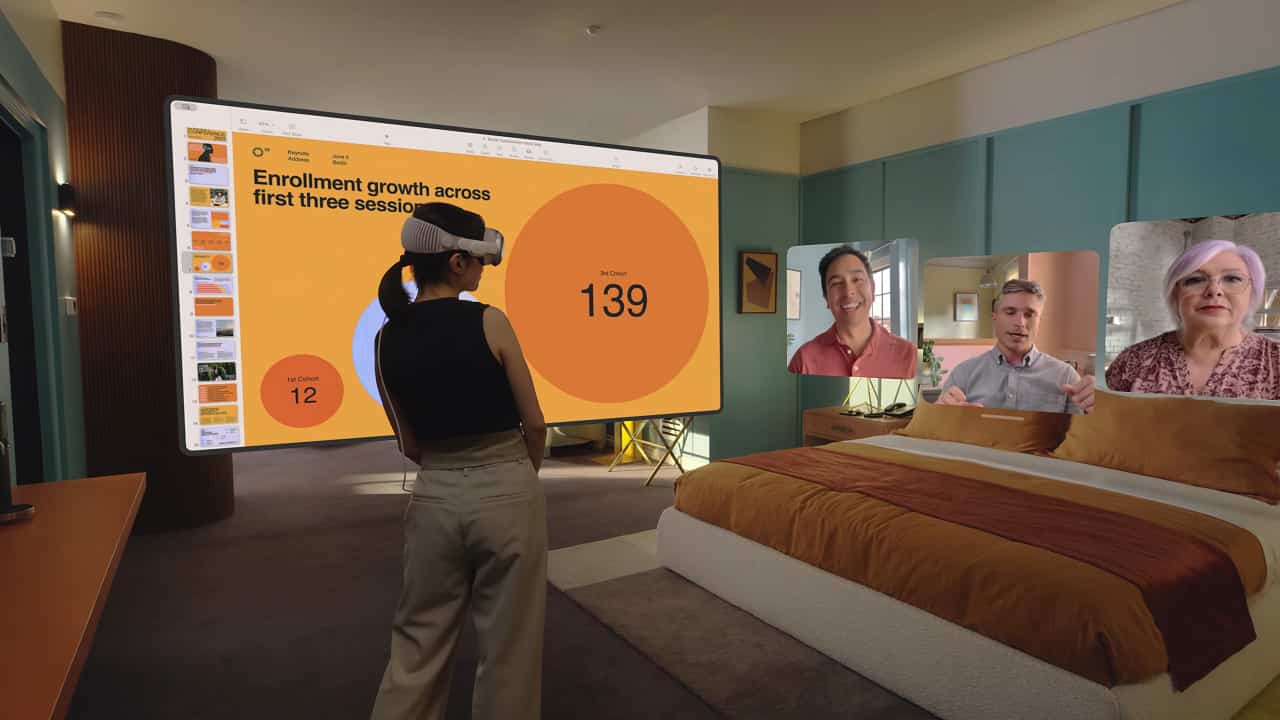
The images Apple shows raise numerous questions. For example, we often see a single Vision Pro user working with headset-less individuals. It paints a less cohesive picture of what we will all do with the new product than what we saw, for example, at Steve Jobs’ famous iPhone unveiling in 2007. A particularly high standard to hold anyone to, obviously. Yet here Apple is really looking for a new paradigm in regard to how we interact with computer technology. Given its sky-high price, we don’t expect the Vision Pro to be a hit with the mainstream. In fact, competing companies would probably be offering a devkit akin to how Oculus began its journey as a manufacturer of VR headsets. Apple, however, wants developers to start using the Vision Pro immediately knowing it has the company’s full dedication. For that, it needed the courage to come out with a full-fledged product right away. In addition, it knows that there are enough avid Apple fans who will step in early regardless.
Will Apple Vision Pro transform industries right away? Things can indeed move quickly in the professional field. Apple offers extensive integration with 3D engine Unity and, of course, with its own developer tools. In that respect, adoption may be fairly smooth and we can count on a wide range of applications. As for consumers, the price will really have to come down by at least 2,000 to 2,500 dollars to be amenable. For surgeons, aircraft mechanics and other professionals, the Vision Pro could represent a significant advancement to existing hardware however. Think of the Microsoft HoloLens, for example, which has zero consumer presence. The fact that the battery is swappable and Apple appears to offer long-term support gives a great deal of hope. Spatial computing will still have to be fleshed out by developers and users. In essence, we can’t yet know what it entails. Still, we should certainly expect Apple to be able to guide the way. After all, products like the iPhone and Apple Watch have shown that the company is not always first in a given segment, but it does shake things up.
Also read: ‘Apple looking to advance AI for iPhones, iPads and other devices’
